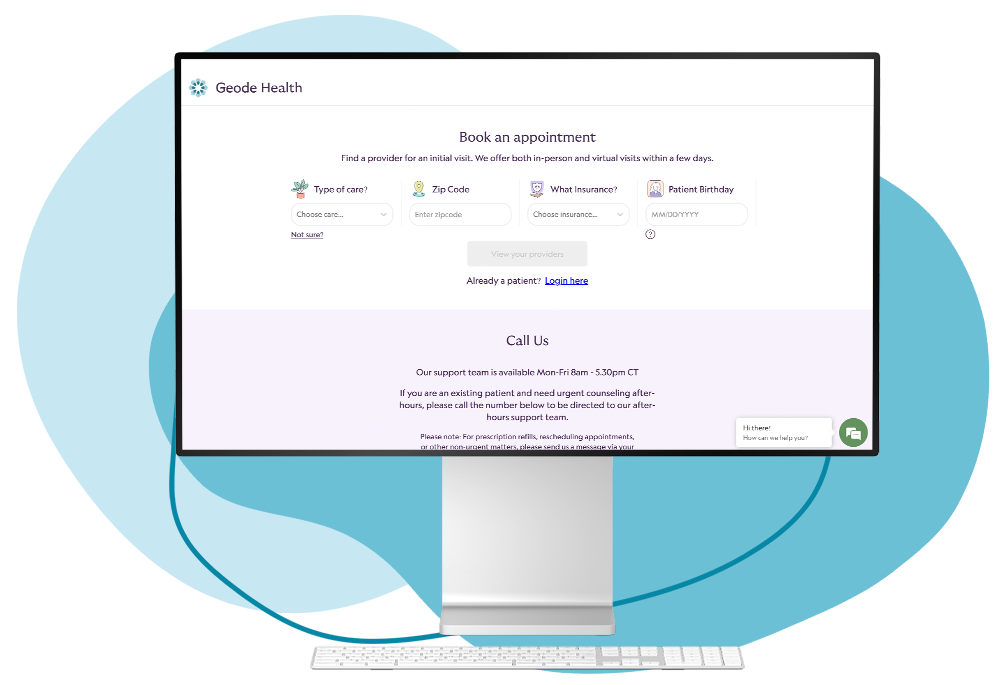The labor shortages that healthcare has been experiencing are not going away anytime soon, leaving the industry still trying to figure out how to deal with the resulting employee burnout, poor operational efficiency, and low capacity limits.
What can healthcare organizations do? Marketing technology can be an answer, helping to improve operational efficiencies and prevent turnover. With the right technologies in hand, healthcare organizations can better position themselves to weather staffing shortages and protect the patient experience. Let’s dig into the details.
What Marketing Technologies Can Help Improve Efficiency for Healthcare Organizations?
Which technologies should you consider in order to improve efficiencies at your healthcare organization? We’ve put together a list of the tech that we think will have the biggest impact on improving operational efficiency in the next few years.
Live Chat and Chatbots
Live chat and chatbots can help you tackle two of your most significant pain points: employee dissatisfaction and attrition. Administrative teams know how hard it is to work when the phone never stops ringing. You can’t get your work done if you’re answering questions all day.
These marketing technologies can step in to give your in-office staff a reprieve by giving patients an easy way to get information. Your team will be unburdened by smaller, more frustrating questions and tasks and able to focus on more gratifying work.
Staff can operate live chat from anywhere, opening up a bigger pool for talent recruitment and even allowing some of your team to transition to WFH status.

Centralized Call Centers
Chances are your team spends a lot of time answering routine questions about insurance, hours of operation, etc., or even forwarding callers to other locations for location-specific answers.
With a centralized call center, you can alleviate these burdens on local staff and improve efficiency. This approach also makes it that much easier to funnel inquiries through to a booked appointment by streamlining patient navigation of the booking experience.
As Lauren Leone, SVP of Healthcare Marketing, phrased it, “if you can bring in a call center to offset the burden of that front office staff whose job it is only to answer that phone and help the patient navigate through the booking experience, great.”
Online Scheduling
Implementing online scheduling on your website is probably one of the biggest ways that you can streamline operations. You know just how much of their workday your administrative staff put into appointment scheduling; with an online scheduling module, your staff won’t be tied up on the phone reviewing calendars with prospects for the majority of the day. “If you can take out that human interaction, give patients the opportunity to schedule directly online and integrate with the provider’s calendars, then that person at the front office no longer has to take the phone call,” from Lauren Leone.
Just as with a chatbot that answers patient questions, online scheduling allows your team to address more important issues at a practice. Added bonus? Your patients will feel empowered by the ability to book an appointment at their convenience.

Centralized CRMs and Marketing Automation
Another good idea for multi-site healthcare organizations? Getting everyone on a centralized CRM with integrated marketing automation. Why? Your team will benefit from easier methods for sharing information between locations, enhancing collaboration, and reducing time wasted on small administrative tasks.
With this technology, your marketing team can also send patients automated appointment reminders, post-appointment care instructions, educational health content, and more. This takes these time-intensive steps off the shoulders of your administrative team. As an added bonus, your patients will value the additional information and support.
With all these benefits, it’s not hard to see how a centralized CRM not only improves efficiency but also allows your organization’s marketing team to provide personalized experiences to improve patient retention.
Review Solicitation Software
We’re all way past the days when businesses could still get away with saying, “Well, my business doesn’t really need to worry about an online presence.” We all know this, and yet some healthcare organizations still don’t put enough focus on their digital reputations.
Your organization must have a positive digital reputation, without question.
Review solicitation software can be a huge help, delivering robust and automated methods for pulling those online reviews in. Manual review generation processes and 1:1 interactions are a) too difficult to scale, b) too time-intensive for your team, and c) too labor-intensive for your patients, who may well drop out of the review process early on with analog options.
Experts agree. As Lauren Leone phrased it,
“The big one, I think too, in the post-care space that really aids us on the front end is review solicitation. Sending the message text is the quickest and best way to do it.”
By using automated review generation tools like Podium or Birdeye, you get a tool that integrates easily with your CRM for more efficient workflows and, perhaps most importantly, takes the burden off your team.
Electronic Health Records (EHR)
Finally, if you are still maintaining cabinets full of paper files, it may be time for a digital transformation in this respect, as well. Electronic Health Records are secure and compliant, automate a variety of tasks across a practice or network, and help you provide better overall care to patients.
EHRs make it easier for physicians to exchange information with one another remotely and in real-time, making sure every clinician dealing with a patient has a current, complete, and accurate file. Your staff won’t be tied up looking for physical files, forms, etc., and your team and patients will even save time with e-prescribing, delivering wins across the board.
Conclusion
Marketing technology will continue to be a key differentiator in the years to come, helping you to automate and streamline your administrative processes. But even beyond efficiency, leveraging these important technologies can help you provide a better patient experience that supports your patient acquisition goals. And as we all know, that’s worth its weight in gold in healthcare.

